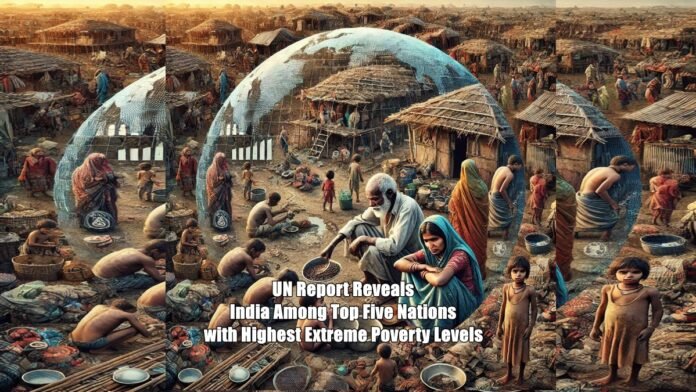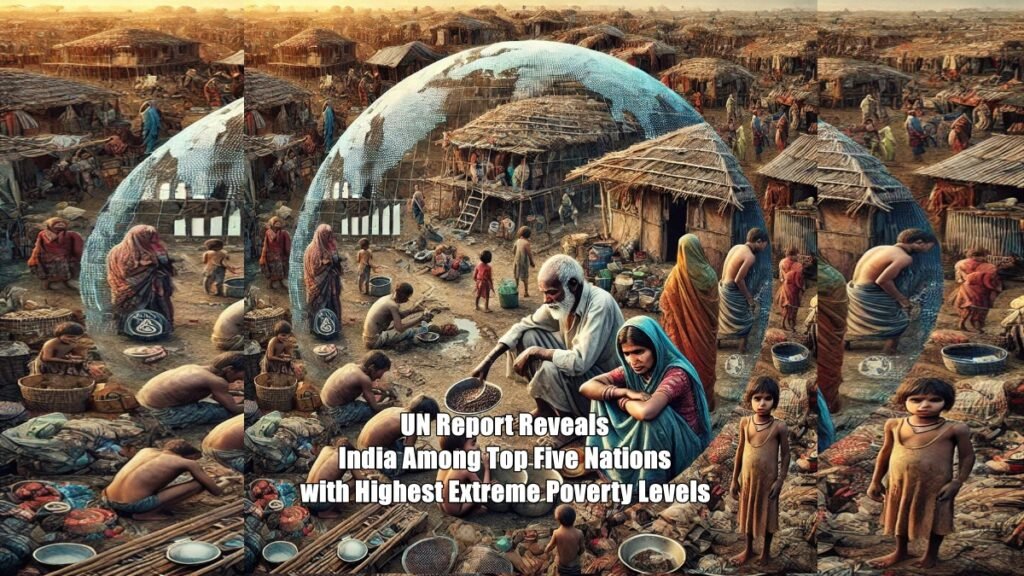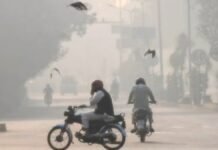
New Delhi: A recent United Nations report has cast a stark light on global poverty, revealing that India is one of the five nations where the largest number of people are living in extreme poverty. According to the Multidimensional Poverty Index (MPI), jointly released by the United Nations Development Program (UNDP) and Oxford University’s Poverty and Human Development Initiative (OPHI), approximately 1.1 billion people worldwide are facing extreme deprivation, half of whom are minors.
India alone accounts for 234 million of these people, making it the country with the highest number of impoverished individuals in the world. The report highlights that India, despite its classification under the medium human development index, continues to struggle with widespread poverty. The other nations listed in the top five alongside India include Pakistan (93 million), Ethiopia (86 million), Nigeria (74 million), and the Democratic Republic of Congo (66 million). Together, these five countries account for 48.1 percent of the world’s poorest populations.
Child Poverty Crisis: Half of the World’s Poor are Minors
One of the most alarming revelations of the report is that 584 million, or more than half of the world’s poor, are under the age of 18. The poverty rate among children stands at 27.9 percent, compared to 13.5 percent for adults. This data underscores the severe impact of poverty on the youngest and most vulnerable members of society, raising significant concerns about future generations’ prospects in affected regions.
Global Struggles: A Lack of Basic Necessities
The MPI report further exposes the harsh living conditions faced by the poor. Of the 1.1 billion individuals living in extreme poverty, 828 million lack access to proper sanitation, 886 million live in inadequate housing, and nearly 1 billion lack access to clean cooking fuel. These deprivations highlight the multidimensional nature of poverty, which is not solely about income but also about basic human necessities.
South Asia and Sub-Saharan Africa: Epicenters of Malnutrition and Poverty
In South Asia, a staggering 272 million people live in households where at least one member is malnourished, making it a significant contributor to global poverty figures. Meanwhile, sub-Saharan Africa also faces massive challenges, with 256 million people in similarly dire conditions. The report shows that the poverty rate is disproportionately higher in rural areas, where 83.7 percent of the world’s poor reside. The rural poverty rate is 28.0 percent, compared to just 6.6 percent in urban areas.
The Impact of Conflict: War and Instability Deepen Poverty
The report also identifies conflict as a major driver of poverty. Currently, 218 million people, or 19.0 percent of the world’s poor, live in war-torn countries, and 40 percent of the impoverished population – about 455 million people – live in regions plagued by instability, war, or low levels of peace. According to UNDP Administrator Achim Steiner, escalating conflicts have led to the displacement of millions, further destabilizing communities and worsening poverty rates.

A Global Challenge: MPI Calls for Renewed Focus on Poverty Reduction
The MPI, which has been published annually since 2010, assesses poverty through ten key indicators, including health, education, and living standards. This year’s report analyzes data from 112 countries, representing 6.3 billion people. The findings of this year’s index present a stark reminder of the daunting challenges facing global efforts to eradicate poverty, especially as conflicts and crises continue to worsen the situation for millions worldwide.
The release of the MPI serves as a call to action for governments, organizations, and international bodies to intensify their efforts in reducing poverty and improving the quality of life for those living on the margins.










































